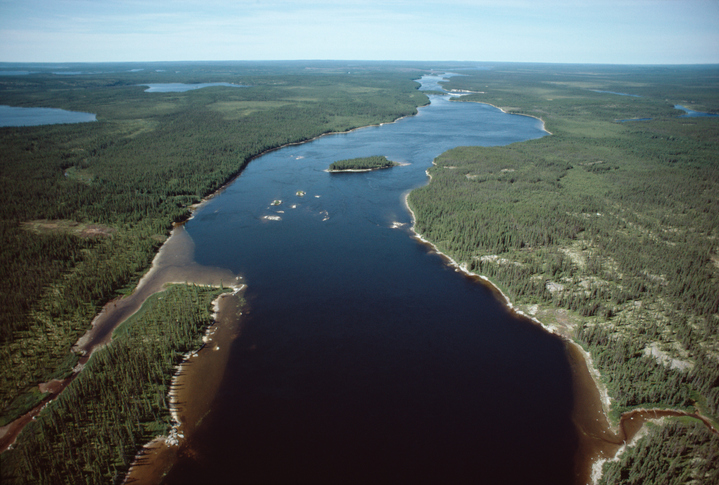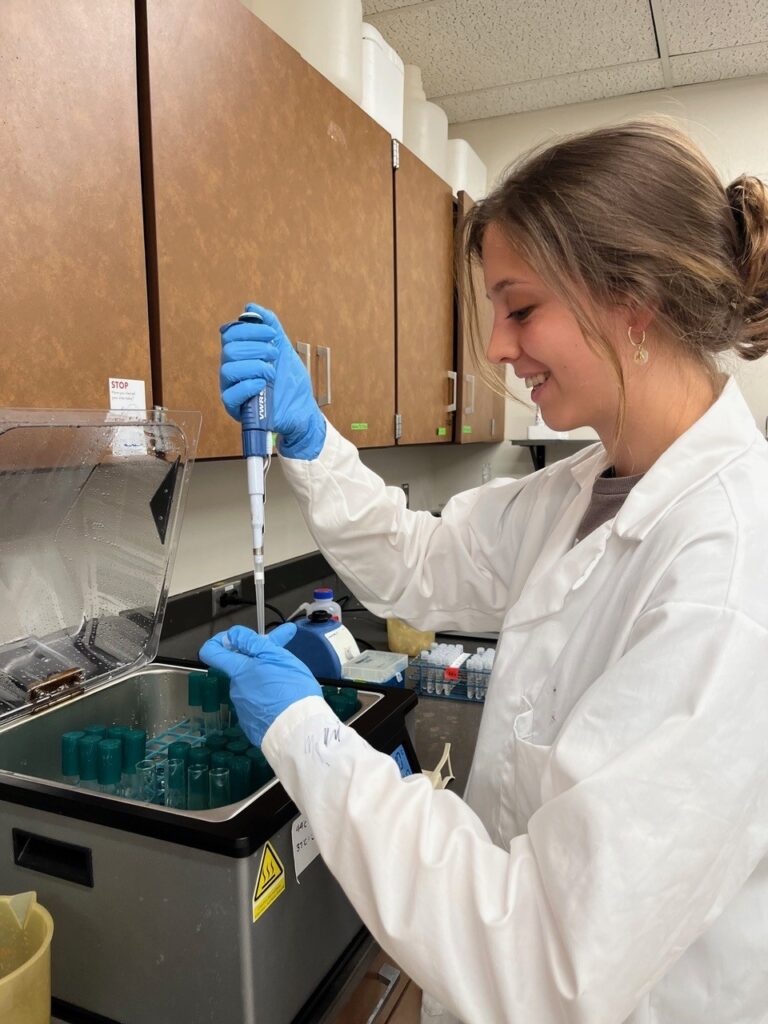France’s largest treated wastewater reuse project begins in Argelès-sur-Mer – Smart Water Magazine

Report on the Argelès-sur-Mer Wastewater Reuse Initiative and its Contribution to Sustainable Development Goals
Project Overview and Strategic Alignment
A significant treated wastewater reuse project has been initiated in Argelès-sur-Mer, France, through a partnership between the Albères-Côte Vermeille-Illibéris Community of Municipalities (CCACVI) and Veolia. This initiative represents France’s largest planned water reuse project and is a direct response to escalating water resource challenges in the Eastern Pyrenees. The project is strategically aligned with several United Nations Sustainable Development Goals (SDGs), serving as a model for ecological transformation and climate adaptation.
- SDG 6: Clean Water and Sanitation
- SDG 2: Zero Hunger
- SDG 11: Sustainable Cities and Communities
- SDG 13: Climate Action
- SDG 9: Industry, Innovation, and Infrastructure
- SDG 12: Responsible Consumption and Production
- SDG 17: Partnerships for the Goals
Project Specifications and Technological Framework
Scope and Objectives
The project’s primary objectives are designed to enhance water security and promote sustainable resource management within the region.
- Water Reuse Volume: To treat and reuse 1.3 million cubic meters of wastewater annually, equivalent to five months of the territory’s potable water consumption.
- Operational Timeline: The facility is scheduled to become fully operational by April 2026.
- Financial Backing: It is the first project of its kind to secure support from France’s national hydraulic fund.
- Agricultural Support: To supply treated water for the drip irrigation of approximately 700 hectares of agricultural land, primarily fruit orchards.
Technological Innovation for Sustainable Infrastructure (SDG 9)
Veolia will implement an advanced membrane ultrafiltration system. This technology is crucial for achieving Category A water quality, the highest standard under French regulations, ensuring the water is safe for agricultural use. This investment in resilient and innovative infrastructure directly supports SDG 9 by upgrading technological capabilities for sustainable outcomes.
Detailed Contributions to Sustainable Development Goals
SDG 6: Clean Water and Sanitation & SDG 12: Responsible Consumption
The project is a cornerstone for advancing SDG 6 by implementing integrated water resources management. It directly addresses Target 6.4 (substantially increase water-use efficiency) and Target 6.3 (halving the proportion of untreated wastewater and substantially increasing recycling and safe reuse globally).
- It reduces pressure on vital groundwater and drinking water sources.
- It establishes a circular economy model for water, aligning with SDG 12’s goal of ensuring sustainable consumption and production patterns.
- It provides a resilient solution to balance the water demands of agriculture, residents, and seasonal tourism.
SDG 2: Zero Hunger & SDG 13: Climate Action
By securing a reliable water source for agriculture, the initiative makes a direct contribution to food security and climate resilience.
- It supports sustainable agricultural practices (Target 2.4) by providing a consistent water supply for irrigation, thereby protecting local food production, particularly fruit orchards.
- As a localized adaptation strategy, the project strengthens resilience to climate-related hazards like drought, directly addressing Target 13.1.
SDG 11: Sustainable Cities and Communities & SDG 17: Partnerships for the Goals
The collaboration and its outcomes are fundamental to creating a more sustainable and resilient community.
- The project enhances the community’s capacity to adapt to the adverse effects of climate change, contributing to Target 11.b.
- The partnership between the public authority (CCACVI) and the private sector (Veolia) exemplifies the multi-stakeholder approach championed by SDG 17, combining public ambition with technological expertise to achieve sustainable development.
Strategic Importance and Future Outlook
This flagship project is positioned as a critical component of the region’s ecological transformation. Stakeholders view it as an essential and ambitious response to drought, securing both water resources and the future of local agriculture. It demonstrates a scalable solution for communities to achieve more resilient water management, preserve freshwater sources, and actively combat the impacts of climate change through innovative resource reuse.
1. Which SDGs are addressed or connected to the issues highlighted in the article?
SDG 6: Clean Water and Sanitation
- The article’s central theme is a treated wastewater reuse project, which directly aligns with ensuring the availability and sustainable management of water. The project in Argelès-sur-Mer is a direct response to water scarcity and aims to improve water resource management.
SDG 2: Zero Hunger
- The project supports sustainable agriculture by providing a reliable water source for irrigation. The article specifies that the treated water will be used for “drip irrigation over approximately 700 hectares of agricultural land, mainly fruit orchards,” thus securing food production in a drought-affected region.
SDG 11: Sustainable Cities and Communities
- The initiative is a community-led effort by the “Albères-Côte Vermeille-Illibéris Community of Municipalities (CCACVI)” to make the region more resilient. It aims to “balance the region’s water needs across agriculture, residential use, and tourism,” which is crucial for the sustainability of the community, especially one that faces seasonal population increases.
SDG 13: Climate Action
- The project is explicitly framed as a climate adaptation strategy. The article notes it is designed to “address increasing water resource challenges in the Eastern Pyrenees” and represents a “localized effort to adapt to climate-related pressures through water reuse and resource management.”
SDG 17: Partnerships for the Goals
- The project is a collaboration between a public authority (CCACVI) and a private company (Veolia), demonstrating a public-private partnership. The article highlights this cooperation, stating, “Veolia has been selected by the local authority to implement the project,” and quotes leaders from both organizations.
2. What specific targets under those SDGs can be identified based on the article’s content?
SDG 6: Clean Water and Sanitation
- Target 6.3: By 2030, improve water quality by … substantially increasing recycling and safe reuse globally. The project’s core purpose is to reuse treated wastewater, with the article calling it the “largest planned treated wastewater reuse project in France.”
- Target 6.4: By 2030, substantially increase water-use efficiency across all sectors and ensure sustainable withdrawals and supply of freshwater to address water scarcity. The project aims to “reduce reliance on groundwater and drinking water sources,” directly contributing to water-use efficiency and addressing scarcity.
SDG 2: Zero Hunger
- Target 2.4: By 2030, ensure sustainable food production systems and implement resilient agricultural practices that … strengthen capacity for adaptation to climate change, extreme weather, drought… The provision of reused water for 700 hectares of farmland is a direct implementation of a resilient agricultural practice to combat drought.
SDG 11: Sustainable Cities and Communities
- Target 11.5: By 2030, significantly reduce … the direct economic losses … caused by disasters, including water-related disasters… By mitigating the effects of drought, a water-related disaster, the project helps protect the local economy, particularly agriculture and tourism.
- Target 11.b: By 2030, substantially increase the number of cities and human settlements adopting and implementing integrated policies and plans towards … resource efficiency, mitigation and adaptation to climate change, resilience to disasters… The project is a clear example of an integrated plan for water resource efficiency and climate adaptation at the municipal level.
SDG 13: Climate Action
- Target 13.1: Strengthen resilience and adaptive capacity to climate-related hazards and natural disasters in all countries. The article explicitly describes the project as a “concrete and ambitious response to the drought affecting our region” and an effort to “adapt to climate-related pressures.”
SDG 17: Partnerships for the Goals
- Target 17.17: Encourage and promote effective public, public-private and civil society partnerships… The collaboration between the “Community of Municipalities (CCACVI) and Veolia” is a textbook example of the public-private partnership model this target promotes.
3. Are there any indicators mentioned or implied in the article that can be used to measure progress towards the identified targets?
Indicators for SDG 6 (Clean Water and Sanitation)
- Volume of safely treated wastewater: The article states the facility aims to “reuse 1.3 million cubic meters of treated wastewater each year.” This is a direct quantitative indicator for Target 6.3.
- Water quality standards: The project will implement a “membrane ultrafiltration system to meet Category A water quality standards, the highest level under French regulations,” which is a qualitative indicator of safe reuse.
- Reduction in freshwater withdrawal: The project’s goal to “reduce reliance on groundwater and drinking water sources” implies a measurable reduction in the use of these sources, with the 1.3 million cubic meters serving as a proxy for the volume of freshwater saved.
Indicators for SDG 2 (Zero Hunger)
- Area of agricultural land under sustainable/resilient practices: The treated water will be used for “drip irrigation over approximately 700 hectares of agricultural land,” providing a specific area as an indicator for Target 2.4.
Indicators for SDG 13 (Climate Action)
- Implementation of local adaptation strategies: The project itself, scheduled to be “operational in April 2026,” serves as a concrete indicator of a local climate adaptation strategy being implemented, as per Target 13.1.
Indicators for SDG 17 (Partnerships for the Goals)
- Number of public-private partnerships: The existence of the formal agreement between the CCACVI and Veolia is a direct indicator for Target 17.17.
4. Table of SDGs, Targets, and Indicators
| SDGs | Targets | Indicators Identified in the Article |
|---|---|---|
| SDG 6: Clean Water and Sanitation | 6.3: Increase water recycling and safe reuse.
6.4: Increase water-use efficiency and address water scarcity. |
– Volume of reused water: “1.3 million cubic meters of treated wastewater each year.” – Water quality standard: “Category A water quality standards.” – Implied reduction in freshwater withdrawal by an equivalent amount. |
| SDG 2: Zero Hunger | 2.4: Implement resilient agricultural practices to combat drought. | – Area of land under resilient irrigation: “approximately 700 hectares of agricultural land.” |
| SDG 11: Sustainable Cities and Communities | 11.5: Reduce economic losses from water-related disasters.
11.b: Implement integrated policies for resource efficiency and climate adaptation. |
– The project itself serves as an implemented policy for resource efficiency and resilience to drought, a water-related disaster. |
| SDG 13: Climate Action | 13.1: Strengthen resilience and adaptive capacity to climate-related hazards. | – Implementation of a local adaptation project with a clear timeline: “operational in April 2026.” |
| SDG 17: Partnerships for the Goals | 17.17: Promote effective public-private partnerships. | – Existence of a formal partnership: “The Albères-Côte Vermeille-Illibéris Community of Municipalities (CCACVI) and Veolia.” |
Source: smartwatermagazine.com

What is Your Reaction?
 Like
0
Like
0
 Dislike
0
Dislike
0
 Love
0
Love
0
 Funny
0
Funny
0
 Angry
0
Angry
0
 Sad
0
Sad
0
 Wow
0
Wow
0











































































